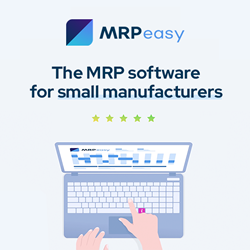The Integrated Digital Thread: How Hybrid Manufacturing Unlocks Agile OEM Production
Industry 4.0 transcends mere automation; it's about the seamless data flow that unifies design and production. This article deconstructs how the strategic integration of additive and subtractive processes within a digital thread creates a resilient, responsive, and agile manufacturing ecosystem, fundamentally shifting how OEMs approach product development and supply chain management.
The legacy manufacturing model often operated with disconnected islands of technology: design, prototyping, and production each siloed. Industry 4.0 dismantles these barriers. For forward-thinking OEMs, the critical question has evolved from simply choosing between 3D printing and CNC machining to understanding how to weave them into a cohesive, data-driven workflow. This integration forms the backbone of the next generation of agile manufacturing.
The Digital Thread: Connecting Design to Automated Production
The concept of a digital thread—a continuous stream of data that runs from CAD model to final part—is central to this evolution. In this framework, both CNC machining and additive manufacturing (AM) become intelligent endpoints within a larger, automated system.
CNC machining contributes to this thread through IIoT-enabled machine monitoring. Real-time data on tool integrity, spindle performance, and production status enables predictive maintenance, minimizing unplanned downtime and paving the way for lights-out production. This transforms CNC from a standalone capability into a responsive node in a networked ecosystem.
Conversely, AM injects unparalleled flexibility into the digital thread. It enables the concept of "digital inventory," where part files are stored virtually and printed on-demand, drastically reducing warehousing costs and mitigating supply chain disruptions. Furthermore, AM facilitates design for automation, where complex assemblies are consolidated into single components, simplifying downstream assembly and reducing the need for complex robotic fixturing.
Hybrid Manufacturing: The Strategic Convergence
The most advanced expression of this integration is hybrid manufacturing. This approach views additive and subtractive not as competing technologies, but as complementary phases within a single, automated production cycle.
Consider the workflow: a near-net-shape part is constructed via directed energy deposition (DED), leveraging the geometric freedom and material efficiency of AM. Crucially, without any manual intervention or re-fixturing, the same part is then finished to precise tolerances using integrated CNC machining. This entire process is governed by a unified digital thread, eliminating queues, handling errors, and setup times. The application is particularly transformative for high-value component repair and the rapid production of complex, functional prototypes in a single automated operation.
Implementing an Agile Manufacturing Strategy: A Framework for OEMs
For OEMs, the value lies not in owning this technology stack but in partnering with manufacturers who have mastered it. Adopting this model requires a foundation built on three pillars:
Interoperability: Machines must communicate. Investing in equipment that supports open standards like MTConnect or OPC UA ensures that data can flow freely between different vendors' systems, from AM units to CNC mills to quality control stations.
Process Intelligence: The choice between additive, subtractive, or a hybrid path must be driven by data. Decision matrices must consider mechanical requirements (isotropic vs. anisotropic properties), dimensional tolerances, surface finish needs, and economic order quantities.
Skills Evolution: The workforce must evolve alongside the technology. This necessitates cross-disciplinary professionals who are fluent in both the languages of additive design and subtractive precision, as well as data analytics and systems thinking.
Conclusion: From Technical Integration to Competitive Advantage
The future of manufacturing is not a choice between technologies but a symphony of their integrated use. For OEMs, partnering with manufacturers who have built their operations on this hybrid, data-driven model is the key to unlocking unprecedented agility. It enables a shift from traditional, linear supply chains to responsive networks capable of rapid iteration, on-demand production, and unparalleled resilience. This is the true promise of Industry 4.0—not as a buzzword, but as a tangible, competitive advantage delivered through precision and intelligence.
Featured Product

MRPeasy - ERP for Small Manufacturers That Delivers Results
Always know what you have in stock and what you'll need to fulfill orders. Never forget to order parts on time or fail to notice a late delivery from your vendor. Easily create manufacturing orders and schedule them automatically according to resource availability or delivery deadline. Generate accurate cost and lead time estimates and provide customers with quick quotes. Receive notifications when orders are late or inventory levels reach a critical point. Ensure seamless communication between sales, production, warehousing, procurement, administration, and finance. Integrate with popular accounting, CRM, and e-commerce apps. MRPeasy is an ERP software for small manufacturers that gives you all that and more. Our users report a 54% average improvement in the overall performance of their business and a 42% increase in on-time deliveries. Try for free, no credit card needed.
